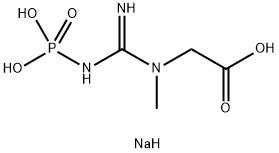N-TETRADECYLPHOSPHONIC ACID
Synonym(s):TDPA;TPA
- CAS NO.:4671-75-4
- Empirical Formula: C14H31O3P
- Molecular Weight: 278.37
- MDL number: MFCD00015834
- EINECS: 225-118-1
- SAFETY DATA SHEET (SDS)
- Update Date: 2024-12-18 14:07:02

What is N-TETRADECYLPHOSPHONIC ACID?
The Uses of N-TETRADECYLPHOSPHONIC ACID
1-Tetradecylphosphonic acid is used to functionalize the surface of BaTiO3 nanoparticles.
The Uses of N-TETRADECYLPHOSPHONIC ACID
TDPA can be used to cap copper nanoparticles to protect them from oxidation. It may also be used in the synthesis of cadmium sulfate (CdS) core, which can be used in the fabrication of cadmium selenium (CdSe)/CdS core quantum dots (QDs). It may also be coated on caesium lead bromide (CsPbBr3) perovskite quantum dots for the development of white light emitting diodes (wLED).
What are the applications of Application
Tetradecyl Phosphonate is a pan-antagonist of EDG-2, EDG-4, and EDG-7
General Description
Tetradecylphosphonic acid forms a self-assembled monolayer (SAM) to functionalize a variety of nanoparticles.
Biological Activity
tetradecyl phosphonate is a pan-antagonist of lysophosphatidic acid 1 (lpa1), lpa2, and lpa3 receptors. the ic50 value for inhibition of lpa-induced calcium mobilization was 10 μm, 5.5 μm, and 3.1 μm, respectively. at a concentration of 10 μm, tetradecyl phosphonate activates a peroxisome proliferator-activated receptor γ reporter construct 4-fold when compared with the controls and partially inhibits autotaxin with an ic50 value of approximately 3 μm [1].lysophosphatidic acid (lpa), also known as autotaxin (atx), is a lipid signalling molecule formed by the hydrolysis of lysophosphatidyl choline by lysophospholipase d [2]. lpa signals through four different g protein-coupled receptors, named as lpa1/edg-2, lpa2/edg-4, lpa3/edg-7, and lpa4/gpr23 [3]. it has been reported that lpa was involved in activating peroxisome proliferator-activated receptor γ (pparγ) [4].
References
[1]. durgam g g, virag t, walker m d, et al. synthesis, structure activity relationships, and biological evaluation of fatty alcohol phosphates as lysophosphatidic acid receptor ligands, activators of pparγ, and inhibitors of autotaxin[j]. journal of medicinal chemistry, 2005, 48(15): 4919-4930.
[2]. tokumura a, majima e, kariya y, et al. identification of human plasma lysophospholipase d, a lysophosphatidic acid-producing enzyme, as autotaxin, a multifunctional phosphodiesterase[j]. journal of biological chemistry, 2002, 277(42): 39436-39442.
[3]. noguchi k, ishii s, shimizu t. identification of p2y9/gpr23 as a novel g protein-coupled receptor for lysophosphatidic acid, structurally distant from the edg family[j]. journal of biological chemistry, 2003, 278(28): 25600-25606.
[4]. mcintyre t m, pontsler a v, silva a r, et al. identification of an intracellular receptor for lysophosphatidic acid (lpa): lpa is a transcellular pparγ agonist[j]. proceedings of the national academy of sciences, 2003, 100(1): 131-136.
Properties of N-TETRADECYLPHOSPHONIC ACID
| Melting point: | 96-98°C |
| Boiling point: | 175.8°C |
| Density | 0.998±0.06 g/cm3(Predicted) |
| storage temp. | 2-8°C |
| solubility | ≥27.8 mg/mL in ETOH; insoluble in H2O; ≥2.27 mg/mL in DMSO with gentle warming and ultrasonic |
| form | Powder |
| pka | 2.65±0.10(Predicted) |
| color | white to off-white |
| Water Solubility | Soluble in ethanol, dimethyl sulfoxide and dimethyl formamide. Partially soluble in water. |
| CAS DataBase Reference | 4671-75-4 |
| EPA Substance Registry System | Phosphonic acid, tetradecyl- (4671-75-4) |
Safety information for N-TETRADECYLPHOSPHONIC ACID
| Signal word | Warning |
| Pictogram(s) |
 Exclamation Mark Irritant GHS07 |
| GHS Hazard Statements |
H303:Acute toxicity,oral H315:Skin corrosion/irritation H319:Serious eye damage/eye irritation H335:Specific target organ toxicity, single exposure;Respiratory tract irritation |
| Precautionary Statement Codes |
P261:Avoid breathing dust/fume/gas/mist/vapours/spray. P304+P340:IF INHALED: Remove victim to fresh air and Keep at rest in a position comfortable for breathing. P305+P351+P338:IF IN EYES: Rinse cautiously with water for several minutes. Remove contact lenses, if present and easy to do. Continuerinsing. P405:Store locked up. |
Computed Descriptors for N-TETRADECYLPHOSPHONIC ACID
| InChIKey | BVQJQTMSTANITJ-UHFFFAOYSA-N |
New Products
Tert-butyl bis(2-chloroethyl)carbamate (S)-3-Aminobutanenitrile hydrochloride N-Boc-D-alaninol N-BOC-D/L-ALANINOL N-octanoyl benzotriazole 3,4-Dibenzyloxybenzaldehyde 4-Hydrazinobenzoic acid 1,1’-CARBONYLDIIMIDAZOLE R-2-BENZYLOXY PROPIONIC ACID 3-NITRO-2-METHYL ANILINE 4-IODO BENZOIC ACID 4-HYDROXY BENZYL ALCOHOL 4-(3-chloropropyl)morpholine phenylhydrazine hydrochloride (2-Hydroxyphenyl)acetonitrile 4-Bromopyrazole 5-BROMO-2CYANO PYRIDINE 5,6-Dimethoxyindanone 5-broMo-2-chloro-N-cyclopentylpyriMidin-4-aMine 4-methoxy-3,5-dinitropyridine 2-(Cyanocyclohexyl)acetic acid 2-aminopropyl benzoate hydrochloride 1-(4-(aminomethyl)benzyl)urea hydrochloride tert-butyl 4- (ureidomethyl)benzylcarbamateRelated products of tetrahydrofuran








You may like
-
 Tetradecylphosphonic Acid CAS 4671-75-4View Details
Tetradecylphosphonic Acid CAS 4671-75-4View Details
4671-75-4 -
 Tetradecylphosphonic acid CAS 4671-75-4View Details
Tetradecylphosphonic acid CAS 4671-75-4View Details
4671-75-4 -
 Tetradecylphosphonic acid CAS 4671-75-4View Details
Tetradecylphosphonic acid CAS 4671-75-4View Details
4671-75-4 -
 Tetradecylphosphonic acid CAS 4671-75-4View Details
Tetradecylphosphonic acid CAS 4671-75-4View Details
4671-75-4 -
 13057-17-5 95.0%View Details
13057-17-5 95.0%View Details
13057-17-5 -
 4-bromoaniline 106-40-1 99.0%View Details
4-bromoaniline 106-40-1 99.0%View Details
106-40-1 -
 5-bromo-2-chlorobenzoic acid 99.0%View Details
5-bromo-2-chlorobenzoic acid 99.0%View Details
21739-92-4 -
 15761-38-3 97.0%View Details
15761-38-3 97.0%View Details
15761-38-3